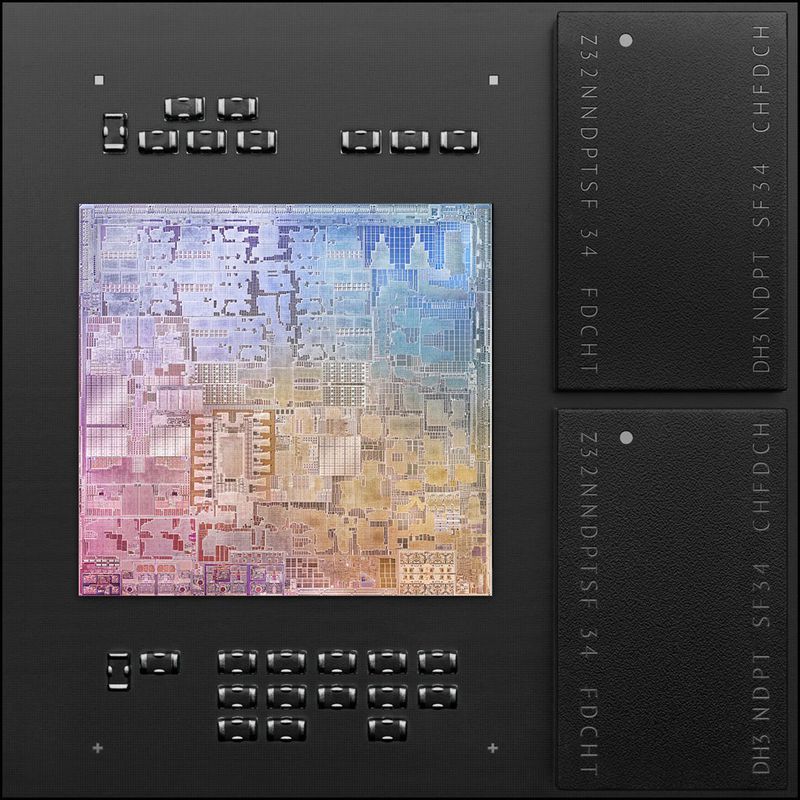Apple M1 Chip

Web 3.0 – A Simple Guide to Know All About It!
25th February 2022
Best Magento development company in Junagadh
14th March 2022Apple in November 2020 released the first Macs with an Arm-based M1 chip, debuting new 2020 13-inch MacBook Pro, MacBook Air, and Mac mini models. In early 2021, Apple added the M1 iMac and the M1 iPad Pro. The M1 chip has received rave reviews for its incredible performance and efficiency, and it is the culmination of more than a decade of Apple’s work on chips created for the iPhone and the iPad.
Apple’s M1 Chip Explained
The M1 is the first Apple-designed System on a Chip (SoC) that’s been developed for use in Macs. It marks Apple’s transition away from the Intel chips that the Cupertino company has been using in Macs since 2006.

As a “System on a Chip,” the M1 integrates several different components, including the CPU, GPU, unified memory architecture (RAM), Neural Engine, Secure Enclave, SSD controller, image signal processor, encode/decode engines, Thunderbolt controller with USB 4 support, and more, all of which power the different features in the Mac.
Prior to now, Macs have used multiple chips for CPU, I/O, and security, but Apple’s effort to integrate these chips is the reason why the M1 is so much faster and more efficient than prior Intel chips. The unified memory architecture that Apple has included is also a major factor because all of the technologies in the M1 are able to access the same data without having to swap between multiple pools of memory.
Built into the M1 chip, the unified memory architecture lets the CPU, GPU, and other processor components don’t need to copy data between one another, and are able to access the same data pool. This brings notable speed and efficiency improvements to the M1. This memory architecture means that the RAM is not user upgradeable, which isn’t too much of a surprise because few Macs have user accessible RAM. M1 Macs max out at 16GB RAM, but even the base 8GB is enough for everyday tasks.
There are 16 billion transistors on the M1, which is the most Apple has ever put into a chip for the fastest CPU core available in low-power silicon and unparalleled CPU performance per watt. Apple’s chip design has allowed it to create Macs that are faster and more power-efficient than was possible with Intel-designed chips, and further enhancements are available through the new tighter integration of an Apple-designed chip paired with Apple-designed software.
What’s Different About the M1
Unlike Intel chips built on the x86 architecture, the Apple Silicon M1 uses an Arm-based architecture much like the A-series chips that Apple has been designing for iPhones and iPads for years now.
The M1 chip is the most powerful chip that Apple has created to date, and it is similar to the A14 chip in the latest iPhone and iPad Air models, built on a 5-nanometer process by Taiwan Semiconductor Manufacturing Company (TSMC). TSMC builds all of Apple’s chips and has done so for many years.
CPU, GPU, and Neural Engine
CPU
The M1 chip includes an 8-core CPU with four high-performance cores and four high-efficiency cores. The high-performance cores are designed to offer the best performance for power-intensive single-threaded tasks.
The four high-performance cores can work together to offer impressive multithreaded performance that has allowed the M1 Macs to outshine even the highest-end 16-inch MacBook Pro models.
GPU
The Apple Silicon chip has an 8-core GPU, but there’s also a version used in the entry-level MacBook Air models that has one of the cores disabled for a 7-core GPU.
GPUs in the Mac mini, MacBook Pro, and higher-end M1 MacBook Air models are all 8-core GPUs capable of running close to 25,000 threads simultaneously and with 2.6 teraflops of throughput. According to Apple, the M1 has the fastest integrated graphics in a personal computer.
Apple M1 Speed
The M1 chip brings up to 3.5x faster CPU performance, up to 6x faster GPU performance, and up to 15x faster machine learning capabilities compared to the Intel chips used in prior-generation machines.
Compared to the latest PC laptop chips, the M1 offers 2x faster CPU performance and does so using just 25 percent of the power.
Battery Life
Even with the incredible speed improvements that the M1 chip brings, it is also more battery-efficient than any other Mac chip Apple has released to date.
Battery life in an M1 Mac lasts up to 2x longer than in prior-generation Macs. The Mac with the longest battery life is the 13-inch MacBook Pro, which lasts for up to 20 hours. That’s double the battery life of the prior-generation model.
Intel Comparisons
Apple used the M1 chip in lower-end Macs, and when it comes to CPU performance, the M1 beats out even the highest-end chips used in Intel Apple’s notebook lineup. The M1 chip has the fastest single-core performance of any Mac, and the multi-core performance isn’t too far off from many of Apple’s desktop machines.
Apple is still selling Intel 13-inch MacBook Pro and Mac mini models, and performance-wise, the M1 versions of these Macs offer much faster CPU speeds. It’s not a good idea to buy a non-M1 version of the 13-inch MacBook Pro or Mac mini at this time because of the inferior performance unless compatibility with x86 apps and the option to run Windows is a concern.
Other Macs in Apple’s lineup will be transitioning to Apple Silicon chips in the future, which is something to keep in mind when considering a purchase. At this time, Apple’s higher-end notebooks and desktops still offer superior GPU performance, but that could change in the future when new versions of Apple Silicon chips debut.
M1 Security Features
Intel Macs had a built-in T2 chip that handled security and other features on the Macs, but with the M1 chips, that functionality is built right in and a secondary chip isn’t required.
The M1 has a built-in Secure Enclave that manages Touch ID and a storage controller with AES encryption hardware for SSD performance that’s faster and more secure.
Running Apps on M1 Macs
Because the M1 chip is using different architecture, Apple has built tools to allow developers to create Universal app binaries that run flawlessly on both Apple Silicon and Intel chips, plus it has developed the Rosetta 2 translation layer that allows x86 apps to run on the M1 chip.


